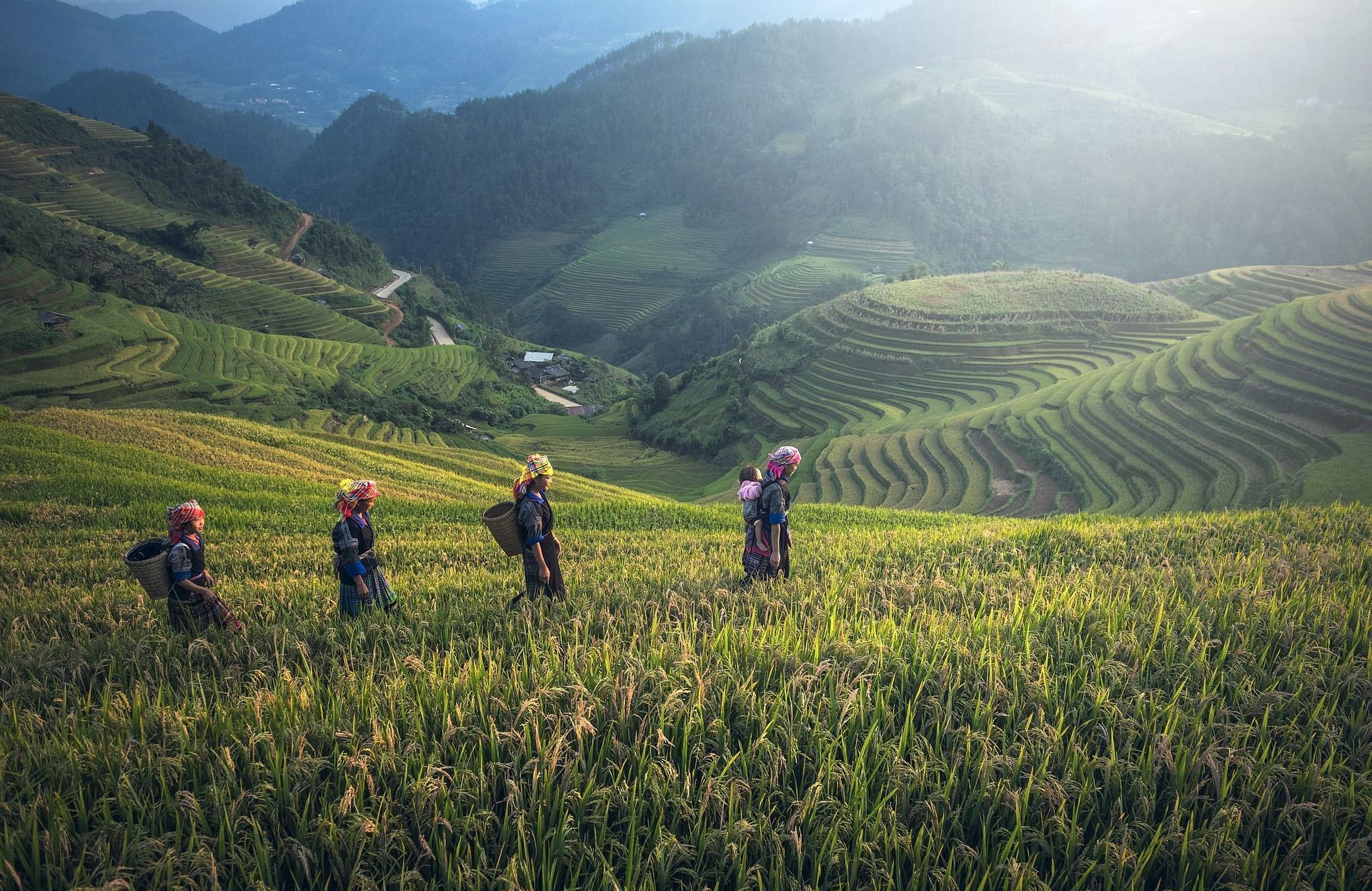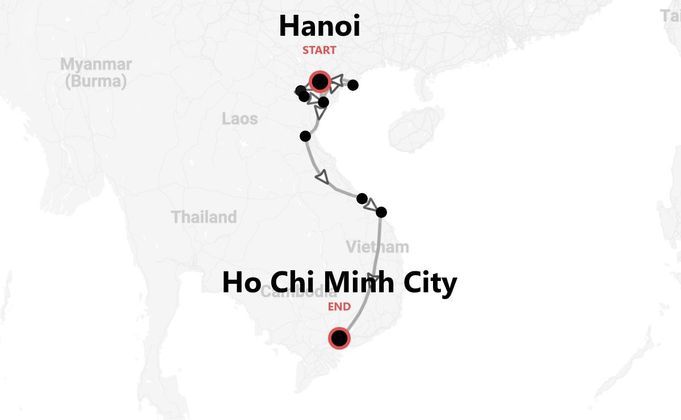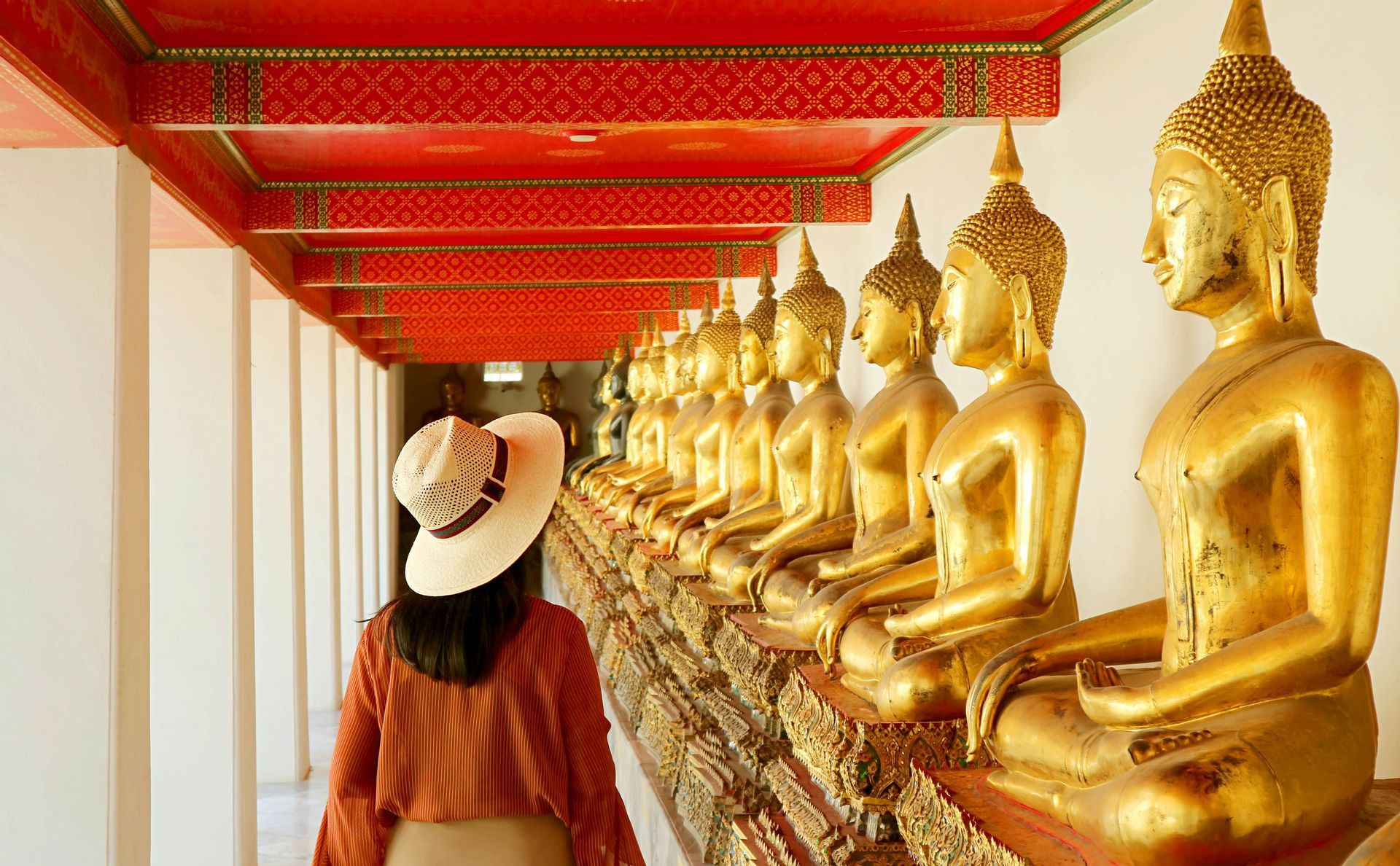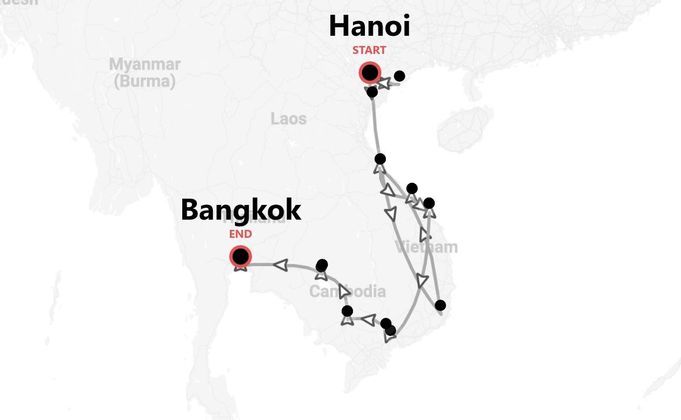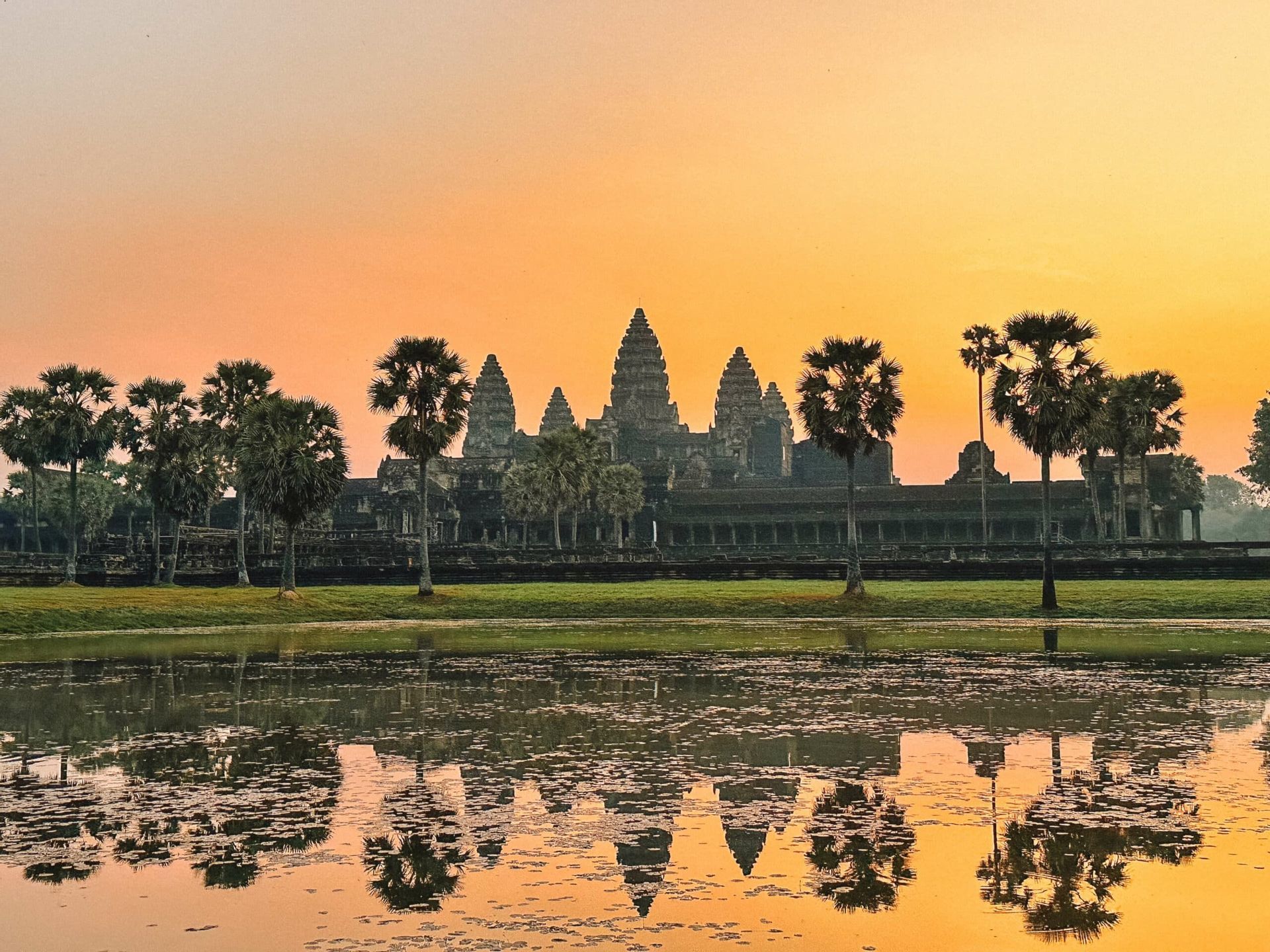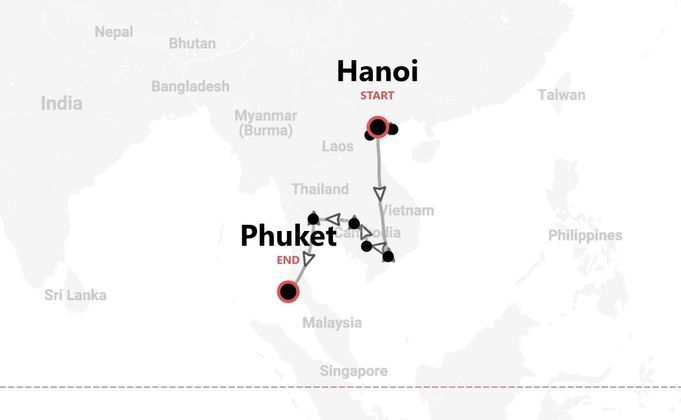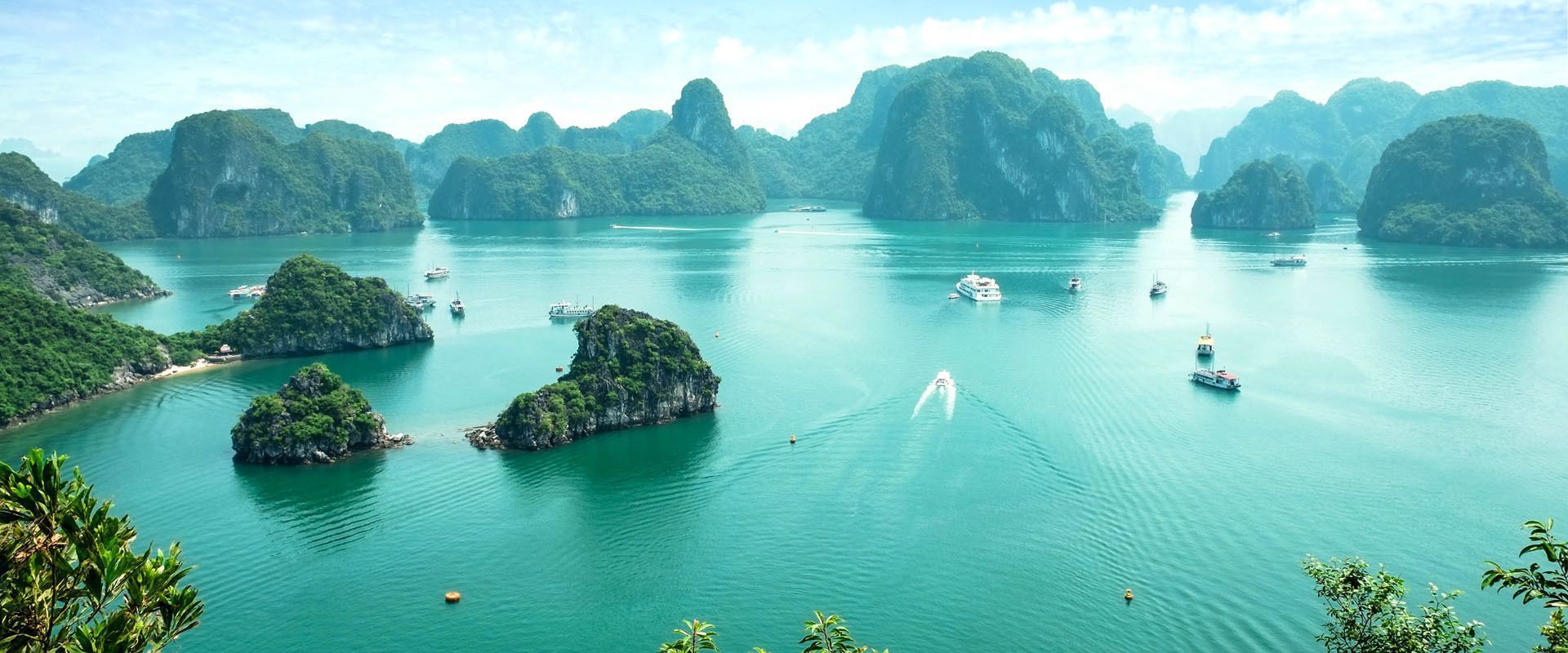
Group trips to Vietnam
Our organized trips to Vietnam
Breathtaking nature, ancient culture and unforgettable flavors... Vietnam is a land of fascinating contrasts: from the bustling streets of Hanoi to the peaceful rice terraces of Sapa, from the magic of Ha Long Bay to the tropical beaches of the south. Along the way, you’ll sip egg coffee in hidden cafés, get lost in lantern-lit streets and cruise between limestone karsts rising from the sea. A journey here is an immersion into ancient temples, vibrant markets, spectacular landscapes and one of the world’s most beloved cuisines. Ready to discover the authentic soul of Southeast Asia?
23 days • 22 nights
FAQs about Vietnam
If you are a UK citizen, to find out the entry requirements for Vietnam, you can check this informational page from our partner Sherpa. If you need a visa, you can apply for it through Sherpa. If you are not a UK citizen, you can still use Sherpa by changing the nationality in the 'Passport' section.
Before traveling, always remember to check the government website of your country of origin for updates on the entry requirements for Vietnam – you wouldn’t want to stay home due to a bureaucratic detail!
- UK residents: review the FCDO Travel Advice.
- US residents: consult the US Department of State Travel Advice.
- Other residents: refer to your government or local consulate's travel advice.
Vietnam is in the Indochina Time Zone, which is 7 hours ahead of GMT. The country does not observe daylight saving time. If it is 12pm in the UK, it will be 7pm in Vietnam. Make sure to adjust your schedule accordingly when planning calls or meetings.
Vietnam uses the Vietnamese Dong (VND). The exchange rate fluctuates, but as of recent estimates:
- 1 GBP is approximately 30,000 VND
- 1 USD is about 24,000 VND
- 1 EUR is around 26,000 VND
You can exchange currency at banks, official exchange counters, and some hotels.
In Vietnam, you can pay using cash, credit cards, or mobile payment apps. Cash is widely used, and it's easy to find ATMs in cities to withdraw Vietnamese Dong. Credit cards are accepted in most hotels, restaurants, and larger shops, but smaller vendors might prefer cash.
Mobile payment apps like MoMo and ZaloPay are becoming more popular, especially in urban areas. It's a good idea to carry some cash for street markets and small purchases.
Tipping in Vietnam is not mandatory, but it is appreciated for good service. If you decide to tip, here are some guidelines:
- In restaurants, leaving around 5 to 10 percent of your bill is generous.
- For taxi drivers, rounding up the fare is common.
- You might also consider tipping hotel staff, such as bellboys or housekeeping, a small amount like 20,000 to 50,000 VND.
Remember, tipping in smaller, local establishments is less expected than in upscale places.
In Vietnam, internet access is generally good, with Wi-Fi widely available in cities, cafes, hotels, and restaurants. However, if you want reliable internet on the go, we suggest you buy a local SIM card or an e-SIM data plan. Popular providers include:
- Viettel
- Vinaphone
- Mobifone
They offer affordable plans with good coverage throughout the country. You can purchase a SIM card at the airport or at local convenience stores and mobile shops.
In Vietnam, the official language is Vietnamese. Here are some useful colloquial expressions that might come in handy:
- Hello: Xin chào
- Thank you: Cảm ơn
- How much: Bao nhiêu
- Yes: Vâng
- No: Không
These phrases can be useful while interacting with locals. Most people in tourist areas speak some English, but knowing a few Vietnamese words can enrich your experience.
In Vietnam, you will find that the plugs used are of Type A, C, and F. The voltage is 220V, and the frequency is 50Hz. If you're coming from countries like the UK or USA, you'll need a universal adapter since your plugs might not fit. Make sure your devices are compatible with 220V to avoid any issues.
The main religion in Vietnam is a mix of Buddhism, Confucianism, and Taoism, often referred to collectively as the Three Teachings. While Buddhism is the most practiced, many Vietnamese also observe ancestral worship.
Important religious holidays in Vietnam include:
- Tet, the Vietnamese Lunar New Year
- Vu Lan, a Buddhist holiday similar to the Western holiday of Mother's Day
When visiting temples, we suggest you dress modestly, covering shoulders and knees, to show respect for local customs.
For your trip to Vietnam, consider the diverse climate and activities you might enjoy.
Here's a packing list to help you prepare:
Clothing:
- Light and breathable shirts
- Quick-dry shorts
- Long pants for cooler evenings
- Light jacket or sweater
- Swimwear
Shoes:
- Comfortable walking shoes
- Sandals
- Flip-flops for beaches
Accessories and Technology:
- Backpack for day trips
- Portable charger
- Travel adapter (Vietnam uses Type A, C, and D plugs)
- Lightweight rain poncho
- Camera or smartphone for photos
Toiletries and Medication:
- Sunscreen
- Insect repellent
- Basic first-aid kit
- Personal hygiene items
- Common travel medication like pain relievers, anti-diarrheal pills, and motion sickness tablets
Vietnam's weather can vary significantly depending on the region and time of year. Here's a quick breakdown:
- North Vietnam (Hanoi): Cool and dry from November to April, hot and rainy from May to October. Best time to visit is October to April.
- Central Vietnam (Hue, Danang): Dry season from February to August, with rain from September to January. March to August is ideal for travelers.
- South Vietnam (Ho Chi Minh City): Hot and humid year-round, with a dry season from December to April and a wet season from May to November. December to April is perfect for visiting.
Always check specific forecasts closer to your travel dates for the most accurate information.
